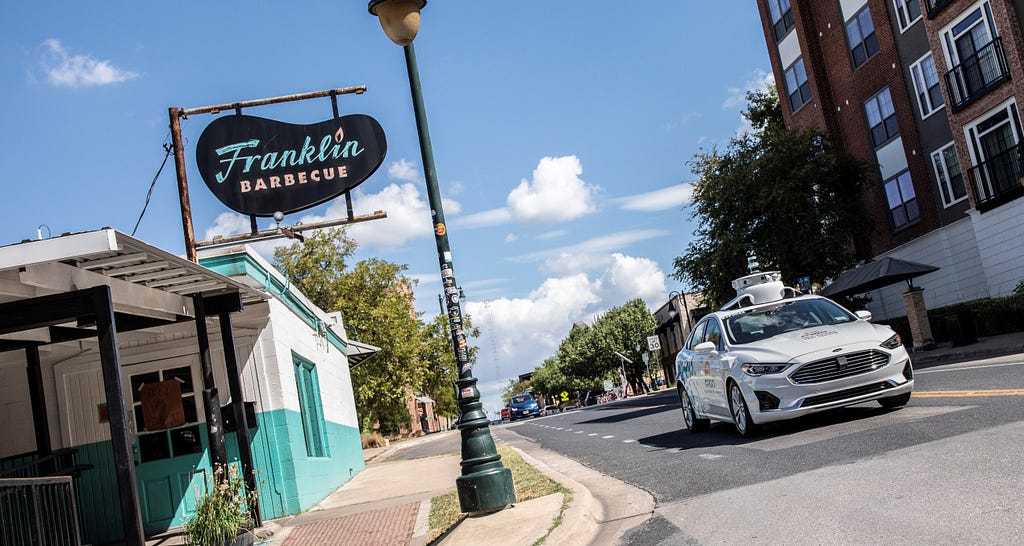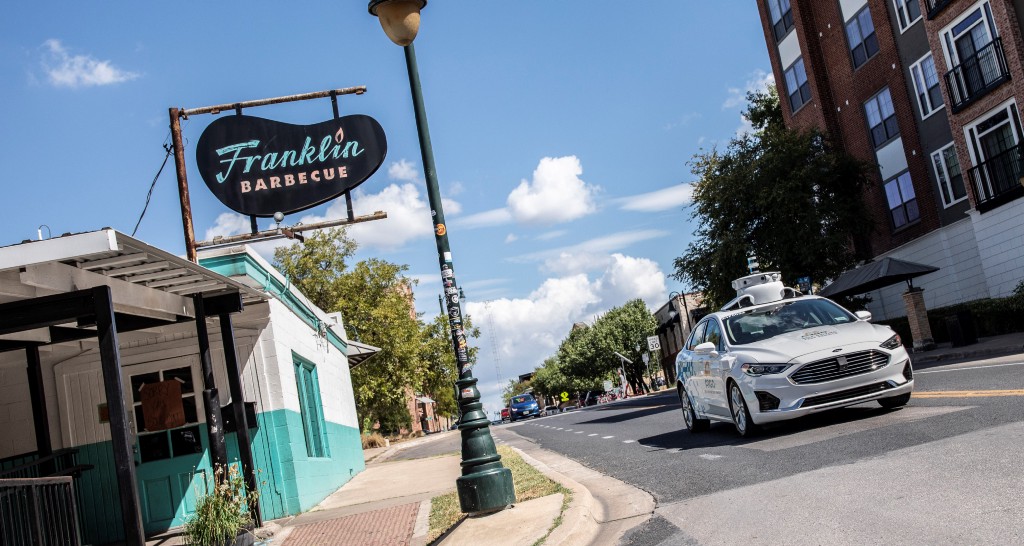By Kathleen Baireuther, Austin Market Manager, Ford Autonomous Vehicles LLC

We stood in Austin one year ago with optimism for the journey ahead — launching a self-driving service that can be a part of the city’s mobility ecosystem. Since then, we have been tackling the complex challenge of building a self-driving service, bringing together all of the intricate pieces to make it a reality. Although 2020 has been a challenging year, we’ve continued to build our business locally and we look forward to advancing our mission in the year to come.
One year of building our business in Austin: In the first year since our launch announcement in Austin, we have made significant strides, including:
· Opened an autonomous vehicle terminal. Located near downtown in East Austin, we opened a terminal that serves as the base for our self-driving vehicle test fleet. This was an important step forward as it allows us to manage our vehicle fleet.
· Invested in a command center. Ford made a real estate investment in a site near Austin-Bergstrom Airport that will eventually be home to a command center — the epicenter of Ford’s local self-driving business and daily operations. It will house local customer relations, business development, research, safety evaluations and testing operations.
· Built our fleet operations expertise. Fleet operations that help ensure our vehicles are utilized, deep cleaned and maintained are a key part of creating a commercial service that people value — and that’s profitable. We recently completed the first phase of a fleet operations pilot in Austin that will be utilized for our business in Austin and Ford’s broader strategy.
· Continued focus on safety. We have engaged in an ongoing dialogue about our operations with first responders in the city to ensure we are creating a safe environment.
https://medium.com/media/578d2231b64b7783111eb7cd848b59cb/href
Self-driving system development: We have continued to work alongside our partner Argo AI to develop the self-driving system.
· Conducted initial mapping: After we announced our plans to build a business, the Argo team created high-resolution maps of the parts of the city where they will first test the self-driving vehicles. These 3D maps of the street environment have detailed, annotated information, including lane geometry, sidewalk locations, bike lanes, traffic signals, street signs, speed limits and static landmarks. The maps serve as the vehicle’s prior knowledge of the areas in which it will operate autonomously. Maps are updated as necessary to reflect changes due to construction or seasonal foliage differences.
· Operating autonomously: After mapping, the Argo team began operating in autonomous mode on public roads. You can read more here about how we safely operate and the steps we are taking to stay safe during the pandemic.
· What we learn in Austin: Each city has unique challenges, and testing in multiple cities offers a variety of complex scenarios that trains the Argo self-driving system to be smart and safe. We knew before we started that Austin has more scooter activity than we’ve seen in our other test cities, but it is also notable for many pedestrians and cyclists. These interactions with other road users enable Argo to develop a self-driving system that is safe for all.
City of Austin’s perspective: Throughout the year, we continued to collaborate closely with the city of Austin.
“The past year has been a wonderful learning experience with regard to our partnership with Ford and Argo AI,” said Jason JonMichael, assistant director of Austin Transportation. “We’ve learned a lot from each other. As a result, Austin Transportation Department has deeper insights into how cities can continue to help enable the safe adoption of autonomous systems. Likewise, the Ford/Argo team has gained a deeper understanding of our community, our values, and how to support and correlate those into their technology and services they deliver. We have more in common than we thought. We share many of the same goals and are aligning our strategies on how to continue to support each other’s work in this common space.
“We are always looking for ways to increase access for everyone in our community and we believe that automated driving services and other emerging mobility solutions will deliver a safer, more efficient and equitable mobility future for Austin.”
Why this matters: Building a self-driving service requires many pieces coming together, working in unison to change how people move. We have made significant progress over the last year to deliver a service that is valuable for Austinites.
What to watch:
· Austinites can expect to see our self-driving test vehicles, clearly marked, operating autonomously in East Austin, South Congress and downtown, including the University of Texas area. Read more about how we test.
· As we continue to ramp up our operations in Austin, we, along with our partners and suppliers, will bring more job opportunities to the community. Currently, we have nearly 30 employees in Austin to support our self-driving business operations and testing.
Share your voice: Maintaining an open dialogue and educating the Austin community about self-driving vehicles is top of mind for us. If anyone in the Austin community has an idea, concern or recommendation for how we can collaborate, the door is open. Please reach out to our team at AVATX@ford.com.
Our Self-Driving Business in Austin, One Year Later was originally published in Self-Driven on Medium, where people are continuing the conversation by highlighting and responding to this story.
